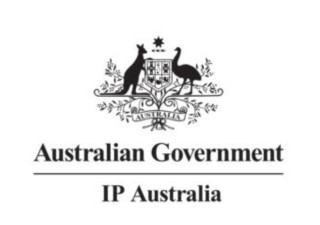Are your sound marks making a big noise?
28 February 2023

Sound plays a pivotal role in purchasing decisions for younger consumers. Patsy Lau and Char Lam explain how to best protect – and exploit – your sound marks, no matter where you are in Asia.
In today’s crowded market, it’s a constant battle for businesses to capture consumers’ attention. According to Forbes, Millennials represent the largest group of consumers but the spending power of Gen Zs is also increasing, and the rise of social media and multi-media marketing means that consumers expect a richer and more engaging purchasing experience. With recent studies showing that the use of sound plays a pivotal role in purchasing decisions for younger consumers, a brand’s sonic identity has become more important than ever. Businesses across all industries have been creating more innovative sound content to connect these powerful consumer groups with their brand identity and culture. This article will look at the legal implications and mechanisms for protecting sound marks in the Asian region.
What are sound marks?
Sound marks are usually legally defined as “a sound which is capable of distinguishing the goods or services of one undertaking from those of other undertakings”.
Sound marks are not strangers to the marketplace. Some iconic sound marks are instantaneously recognizable: the musical introduction of 20th Century Fox for motion pictures; the “Da-Dum” sound of Netflix; and the click sound of Nintendo Switch. These highly successful sound marks serve as a badge of trade origin, allowing consumers to immediately identify the source of the goods and services.
Why is it important to protect sound marks?
Securing registrations for sound marks is the first step to ensuring that the considerable investment in developing the brand will be protected. Particularly in Asia, where most jurisdictions operate under a first-to-file system, early registration will deprive squatters of opportunities. Further, valid registrations grant businesses the right to prohibit competitors from using identical, or confusingly similar sound marks, to identify their goods and services. This reduces the risk of diluting the distinctiveness of a sound mark in the market.
When and where to file applications to register sound marks?
The short answer is: as soon as possible, and wherever you do business or intend to do business. Applications should be filed promptly as the examination of sound mark applications are often more complex than traditional trademarks; the individual Registries may require applicants to accurately and clearly describe the sound and may have its own requirements for representation of a sound trademark, including providing a graphical representation. Music may be relatively simple, but more unusual sounds, such as Darth Vadar’s breathing, may be more of a challenge to accurately describe and represent in writing.
In some jurisdictions, the applicant may be required to adduce evidence of use showing acquired distinctiveness before registration will be granted. [See table below.] It is also worth noting that in some jurisdictions such as Cambodia and the Philippines, sound marks are only protectable by copyrights, and not as trademarks.
What and how to register?
Sound marks are subject to the same inherent distinctiveness threshold as traditional trademarks. Sound marks containing certain distinctive linguistic elements (as opposed to being purely musical), and sound marks which are relatively short in duration, are likely to be examined more quickly and meet fewer objections. A full assessment of the registrability threshold of relevant jurisdictions should be conducted so that a holistic approach may be adopted across the region. This would save on both time and legal fees.
Monitoring sound marks
Watch monitoring services for sound should soon become available for brand owners in the foreseeable future as the required technology to recognize sounds being played already exists in the marketplace. For instance, since October 2020, Google’s music recognition algorithm can match songs with people humming or whistling of the melody and its variations. When such watch service becomes available, brand owners can opt for such services so to be notified of any potential conflicting marks, and to decide whether and the type of actions to take. This would be a useful tool for brand owners to combat any unauthorized third-party applications for similar sound marks.
Statutory thresholds for protecting sound marks and procedural requirements
Below is a summary of the different legal requirements for filing applications for sound mark registrations across some Asian jurisdictions. As shown, sound marks are protectable by way of non-traditional trade marks in many of these jurisdictions (except in the Philippines and Cambodia where sound marks can only be protected by way of copyright).
People’s Republic of China | |
Required Information/ Documents | Remarks |
|
|
Hong Kong SAR | |
Required Information/ Documents | Remarks |
|
|
Macau SAR | |
Required Information/ Documents | Remarks |
|
|
Taiwan | |
Required Information/ Documents | Remarks |
|
|
Indonesia | |
Required Information/ Documents | Remarks |
|
|
Japan | |
Required Information/ Documents | Remarks |
|
|
Malaysia | |
Required Information/ Documents | Remarks |
|
|
Singapore | |
Required Information/ Documents | Remarks |
|
|
South Korea | |
Required Information/ Documents | Remarks |
|
|
Thailand | |
Required Information/ Documents | Remarks |
|
|
Vietnam | |
Required Information/ Documents | Remarks |
|
|
Conclusion
As businesses increasingly embrace audio branding, the protection of these meticulously-crafted sounds, is a critical part of any trademark strategy. Brand owners are encouraged to consult with their legal counsel to formulate strategies to secure the best protection for their sound marks without delay.








